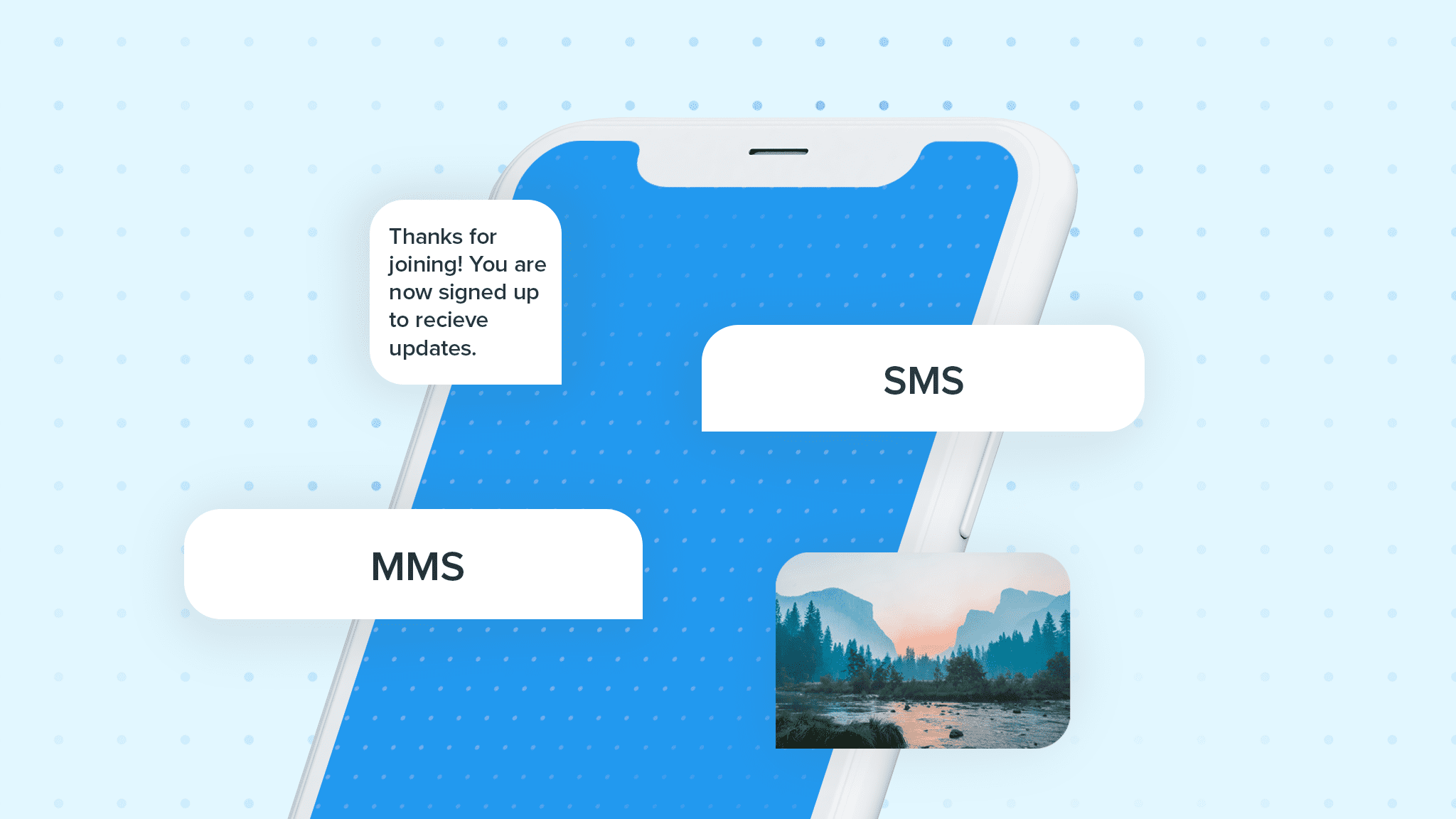

The good news: most phone carriers offer unlimited SMS and MMS plans for US texts. Though the difference is only a matter of cents (often 1-2 cents), this can add up if you’re using MMS for lots of text marketing campaigns or customer support. Since multimedia messages involve more data, each text will cost more. Your message will simply be sent as individual texts to each person. With SMS, sending a text to multiple people at once is more like BCCing people on an email. Sending group texts via MMS allows the entire group to seamlessly chat in one conversation - for example, if you’re collaborating with your team. However, if you’re sending group texts, MMS offers a better delivery experience when comparing SMS vs MMS. It’s harder to guarantee that your mobile marketing will go through to subscribers when using MMS. Though most US adults own smartphones, 15% still don’t. Sending an MMS to a phone number that can’t receive MMS messages can lead to deliverability issues. While Androids and iPhones support MMS, not every cell phone does. Pretty much every cell phone used today supports SMS - and the best VoIP systems all do, too - which can boost the delivery rate of your business texts. The redeeming quality of SMS messaging is its reliability. If you’re guiding clients or team members through a step-by-step process, your instructions may start feeling like a confusing Ikea manual. There’s a chance that those texts will arrive out of order. However, a 164-character text will be broken up into one 153-character text and then chained together to a 9-character text. You can still type over 160 characters with SMS. MMS character limits can vary between carriers, but modern VoIP phones (like OpenPhone) can support up to 1,600 characters per text. SMS messages are limited to 160 characters, which, as noted, might be fewer if including special characters or emojis. The same goes for special characters, like Chinese and Arabic letters, so supporting international clients via SMS can be more difficult. Each emoji is sent as a lengthy string of characters (using a language known as Unicode) that’s translated into an icon when received. When they do, using a single emoji can reduce your total character limit to 70. Some carriers don’t even support emoji when using SMS. Any multimedia content must be sent as links. With SMS, you’re usually limited to plain text. With no ability to send rich media, SMS marketing isn’t as engaging as MMS marketing. While convenient, SMS messaging can be a snooze. The biggest perk of MMS is its ability to support images, videos, GIFs, and even audio files. We’ll also compare SMS vs MMS in terms of deliverability and pricing. To help you further understand the difference between SMS and MMS, we’ll go into further detail about the distinct qualities of each type of text. Understanding other key differences between SMS vs MMS But with VoIP phones, you can send MMS with any internet connection, including WiFi. With most phone carriers, MMS requires a cellular data connection. MMS is most commonly used to send photos, but you can also send audio, videos, and other files. When you send a selfie or your friend responds with a GIF, you’re likely using MMS. Introduced a decade after SMS, MMS messaging was built to support a wide range of multimedia content and significantly longer texts. MMS stands for Multimedia Messaging Service.

Partnerships Grow your business with OpenPhone.Office hours Join us live every week to learn more about OpenPhone.Help Center Get answers to all your questions.What’s new Check out what we’ve launched.Demo Watch a demo and find out why you’ll love OpenPhone.Customer stories Learn how others use OpenPhone.

Careers We’re hiring! See our open roles.Logistics & transportation Streamline your operations.Small businesses Top-rated small business phone.Education Enrich your student experience.
Only send sms and mms messages professional#


 0 kommentar(er)
0 kommentar(er)
